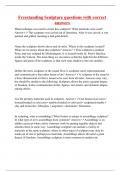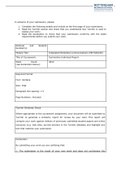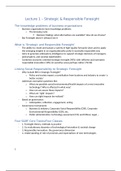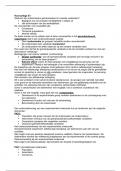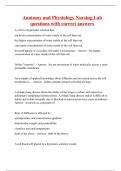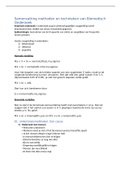Lecture: MV-analysis and Portfolio Theory
This lecture is about return, risk and correlation and portfolio theory
Program:
-Return, risk, correlation
- Portfolio analysis
- Portfolio choice
Return, risk, correlation coefficient
RETURN
Assume we have 1000 euros to invest, and current share price is 10 euros. Thus you can buy
100 shares. what is the expected return of our investment?
We assume at t=0 the price is 10 and if we sell it after a year, then p1 stands for the expected
price you get if you sell it directly after you have received the dividend. Div1= expected dividend
we will receive at t=1.
,P1-P0= capital gain
Thus total return is the sum of capital gain rate and the dividend yield,
Note: you can have a positive dividend yield and the capital gain rate is negative, and total
return can be negative. Don't only focus on the dividend but also the price of the share is
relevant for the total return.
-
, ● In this example, we buy a share for 10, we reinvest our dividend (0.25) by buying the
next share in april 14. thus the number of shares we bought is 0.25/10.10= 2.5% (we can
buy this much shares on april 14).
● on november 6 we get 0.60 cents in dividends, but thats per share, so total share we get
: 0.60 x 1.025 ( the 1.025 here is the 2.5% of shares we bought on april 14)
2nd way: Calculate the return over each interval then multiply 1+ these returns with each other.
economic income=(capital gain+div)/price
total return: (1+return of first interval)(1+return of 2nd interval)(1+return on 3rd interval)-1
we add -1 cause 1+r3 is < than 1
Average returns:

